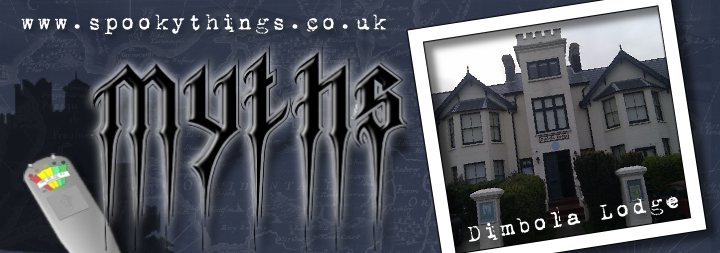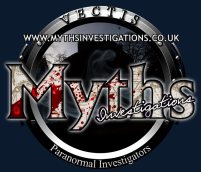Curse of Knighton Gorge
 An area of empty land, nestled between the Culver Down’s – is considered by many to be the Most Haunted location on the whole of the Isle of Wight.
An area of empty land, nestled between the Culver Down’s – is considered by many to be the Most Haunted location on the whole of the Isle of Wight.
A house shrouded in mystery, Knighton Gorges exists today as two lone gateposts, the old gardener’s cottage and the old ice house on private land.
This once grand house, it is said can be seen once a year on New year’s eve. A traveller was said to have knocked at the house one new years eve to ask for shelter from the rain, on seeing people inside dancing in regency costume, as no-one answered him, he went on his way to the nearby village of Newchurch, where was taken in the morning to the site of the ‘house’, to see nothing more than the two pillars standing alone in the landscape…
The manor of Knighton was once the home of Hugh de Morville; an assassin of Thomas Becket, this sin haunted him for the rest of his life, and he believed the manor to be cursed. After Hugh’s death the house passed to Hugh de Gorges on his marriage of Ellen de Morville in 1253. This is when gorges was added to the manor’s name.
The manor’s cursed reputation was continued when Ralph strangely returned from the crusades, while fighting with the Templars, penniless. Many knights had returned rich and powerful.
The curse continued, with Ralph’s son killed in the crusades, and his grandson, also a Templar dying a dishonoured death in a French prison.
The house passed to the Dillingtom family, who lived there throughout the reformation, when the catholic chapel was pulled down and rebuilt into a brewhouse, and the restoration.
Tragedy continued to make it’s mark on the house, when in the early 18th century Sir Tristram Dillingtom’s children all died from the smallpox. This left him in a state of mental depression, and he took his own life in the lake.
In those days suicide was a sin, and would have meant dis-inheritance with the estate passing to the crown. The suicide was therefore covered up, and the estate passed to Hannah and Mary Dillingtom.
The house passed to the Dillingtom family, who lived there throughout the reformation, when the catholic chapel was pulled down and rebuilt into a brewhouse, and the restoration.
After Hannah’s death, Mary was dependant on her niece Jane, married to John Eyre; it has been suggested that Charlotte Bronte visited Knighton Gorges and based her work of Jane Eyre there. On Mary’s death Maurice Bocland and Jane Erye took over, the house then passed to Maurice Bisset; Bocland’s grandson.
The bad luck of Knighton Gorges continued to reign, when Bisset became involved with Sir Richard Worsley’s wife. Sir Richard sued Bisset for £20,000. The jury however, on finding Bisset guilty, fined him only damages of 1 shilling! Bisset however was now shunned and ostracised from society. He lived alone in the now neglected house of Knighton Gorges. Now suffering from the madness of venereal disease given to him by Worsley’s wife; Jane, Bisset demanded that the accursed house of Knighton Gorges be pulled down stone by stone, so that it could never be built again.
He went to live in the gardener’s cottage. By November 1821 none of the house remained, Bisset died a lonely death and Knighton Gorges remained just a distant memory in the landscape…
Remains of the front room in the gardener’s cottage & the overgrown garden
Ghost stories abound at Knighton, among them are sightings of a lady dressed in a blue/purple dress who runs down towards the gates from the house; this is said to be the ghost of Bisset’s daughter. Ghostly carriages have be said to have been heard along the driveway and surrounding track road.
The house itself is said to appear on New Years Eve, with a party in full swing. Visitors to the site have reported strange lights in the sky and around the area, where the house once stood. All manner of ghostly activity has been especially reported around the gateposts. Strange Lights, and Orbs are seen as a regular occurrence.
What have we captured in the picture above? Look closely and you can just makeout what looks-like, blue orbs dancing around the gateposts.
(Written & Researched By Jo Thornton..)







Leave a Reply
You must be logged in to post a comment.